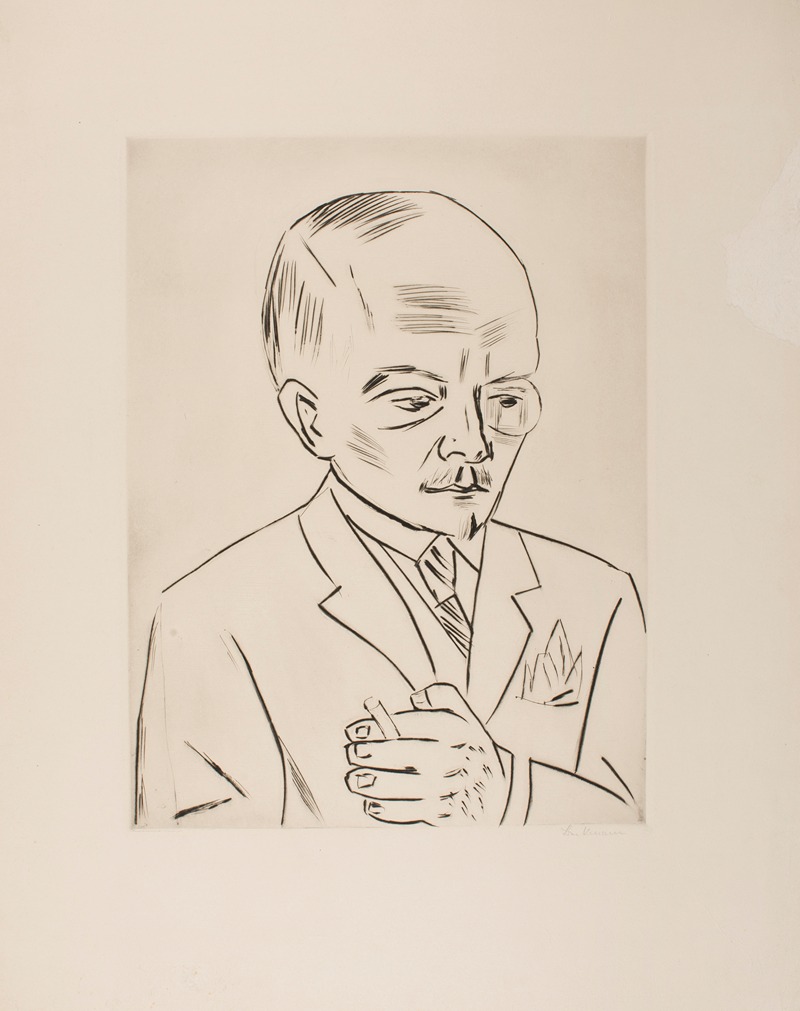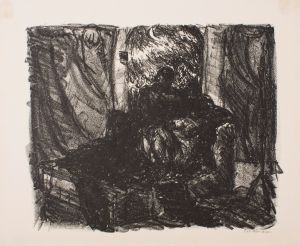
Portrait of Georg Swarzenski
A hand-painted replica of Max Beckmann’s masterpiece Portrait of Georg Swarzenski, meticulously crafted by professional artists to capture the true essence of the original. Each piece is created with museum-quality canvas and rare mineral pigments, carefully painted by experienced artists with delicate brushstrokes and rich, layered colors to perfectly recreate the texture of the original artwork. Unlike machine-printed reproductions, this hand-painted version brings the painting to life, infused with the artist’s emotions and skill in every stroke. Whether for personal collection or home decoration, it instantly elevates the artistic atmosphere of any space.
Max Beckmann's "Portrait of Georg Swarzenski" is a notable work by the German painter, created in 1928. Beckmann, a leading figure of the New Objectivity movement, was known for his expressive and often somber style, which is evident in this portrait. The painting depicts Georg Swarzenski, a prominent art historian and museum director, who played a significant role in the cultural landscape of early 20th-century Germany.
Georg Swarzenski was born in 1876 in Dresden, Germany, and became an influential figure in the art world. He served as the director of the Städel Museum in Frankfurt from 1906 to 1933, where he was instrumental in expanding the museum's collection and promoting modern art. Swarzenski's tenure at the Städel was marked by his commitment to contemporary art, which was reflected in his acquisition of works by artists such as Beckmann, who was a contemporary and acquaintance.
The portrait itself is a striking example of Beckmann's mature style. It captures Swarzenski with a sense of introspection and gravity, characteristic of Beckmann's approach to portraiture. The use of bold lines and a dark, muted color palette is typical of Beckmann's work during this period, emphasizing the psychological depth of the subject. Beckmann's portraits often convey a sense of the inner life of the sitter, and this work is no exception, presenting Swarzenski as a thoughtful and serious figure.
Beckmann's relationship with Swarzenski was professional and mutually respectful. Swarzenski's support of modern artists like Beckmann was crucial during a time when such art was often met with resistance. The portrait not only reflects Beckmann's artistic style but also serves as a testament to the cultural and intellectual milieu of Weimar Germany, a period marked by both innovation and instability.
The painting remained in Germany until the rise of the Nazi regime, which led to significant changes in the art world. Beckmann's work was labeled as "degenerate art" by the Nazis, and many of his paintings were removed from German museums. Swarzenski, being of Jewish descent, faced persecution and eventually emigrated to the United States in 1938, where he continued his work in the arts.
Today, "Portrait of Georg Swarzenski" is recognized as an important piece within Beckmann's oeuvre and serves as a historical document reflecting the complex interplay between art, politics, and society during the early 20th century. The painting is housed in a private collection, and its significance is appreciated by art historians and enthusiasts who study the period and Beckmann's contribution to modern art.


















